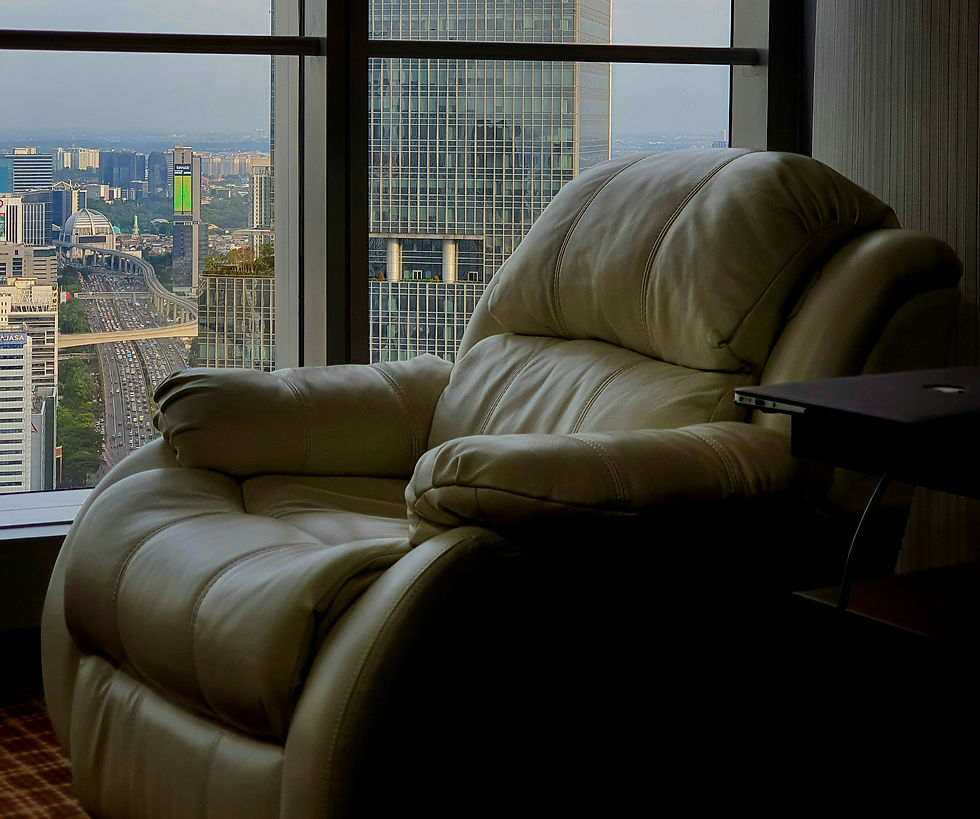Why Upholstered Furniture is Suited to Care Homes
- Alyssa Barnes
- Jul 11
- 3 min read
Upholstered furniture is often the preferred choice for care homes due to its focus on comfort, support and durability. Residents spend more time seated than the average household, so selecting the right materials and designs matters. Well-made upholstered chairs and sofas can help with posture, provide gentle cushioning, and reduce the risk of pressure points developing. In shared lounges, dining spaces or private rooms, this type of seating helps create a softer, more inviting environment.
Upholstered Furniture for Care Homes: Key Considerations
When choosing upholstered furniture for care homes, it’s important to consider both form and function. The frame should be strong, and the cushioning should retain its shape over time. Upholstery fabric must be suitable for regular cleaning. Many care facilities opt for water-resistant, antimicrobial materials that meet fire safety standards. Options such as wipe-clean vinyl or treated polyester blends offer a balance between hygiene and appearance.
Colours and patterns can also influence the overall feel of the room. Neutral tones work well for calming spaces, while bolder shades may be used for memory care settings to aid recognition.
Matching Seating to Daily Use
Different spaces in a care home serve different purposes. Lounge chairs need to support relaxed sitting, while dining chairs must allow for upright posture and ease of movement. For rooms used by residents with mobility difficulties, chairs with firm arms and high backs can assist with sitting and standing. Reclining chairs and rise-and-recline models are also common, especially in private rooms or quiet lounges. These allow individuals to shift positions easily and may reduce the need for staff intervention during rest times.

Blending with Interior Design
Functionality does not need to compromise style. Upholstered furniture comes in a wide range of shapes, fabrics and finishes, making it suitable for both modern and traditional settings. Care homes often select matching suites or mix different pieces to give a more homely feel. This flexibility allows providers to create welcoming spaces that reflect the preferences of their residents. Subtle patterns or textured fabrics can add warmth without being overly decorative, keeping spaces comfortable yet practical.
Supporting Resident Wellbeing Through Furniture Design
The right furniture can make a noticeable difference to residents’ comfort and routine. Upholstered seating that offers firm support and well-proportioned cushions can improve sitting posture and reduce fatigue, especially for those who spend long periods seated. Thoughtful design also helps promote independence. For example, chairs with slightly forward-angled seats and stable armrests can make standing easier, reducing the need for assistance. Selecting furniture that supports these everyday needs helps create a safer, more comfortable living environment.
FAQs
What type of upholstery fabric is best for care homes?
Wipeable, antimicrobial fabrics like vinyl or coated polyester are often chosen for their durability and ease of maintenance.
Can upholstered furniture be fire resistant?
Yes, many manufacturers supply care home furniture that meets the relevant fire safety regulations for residential care settings.
Is it possible to customise the fabric or frame colour?
Most suppliers offer a range of colours, finishes and wood tones to suit different care home interiors.
Are rise-and-recline chairs considered upholstered furniture?
Yes, they are a common choice for residents who need extra support, and they often feature padded arms, backs and seats.
How often should upholstered furniture be replaced in a care home?
It depends on usage, but many care homes review their furniture condition every five to seven years or when wear begins to affect comfort or safety.
Upholstered furniture provides a practical and comfortable seating solution for care homes. It meets the needs of residents while helping to shape spaces that feel lived in and welcoming. By choosing the right designs, materials and finishes, care providers can improve both day-to-day use and the visual quality of shared and private rooms.


Comments